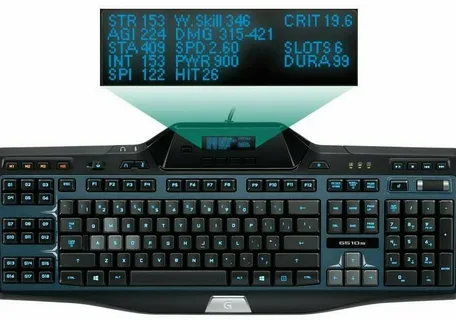In the ever-evolving world of technology, innovations are constantly reshaping how we interact with devices. One such advancement is the introduction of smart keyboards with displays, which have begun to make waves in the tech industry. But what exactly is a keyboard with display, and how does it differ from traditional keyboards? In this article, we’ll explore the concept, benefits, and potential uses of these innovative devices.
What is a Keyboard with Display?
A keyboard with display, also known as a smart keyboard, integrates a small screen directly into the keyboard itself. Unlike traditional keyboards, which feature static key layouts, these smart keyboards allow users to customize the display of the keys. The screen may show different layouts, symbols, or even personalized shortcuts based on the user’s needs. The display can be used for various purposes, ranging from simple text input customization to more advanced functions like providing dynamic feedback or integration with software.
Smart keyboards with displays are designed to enhance user experience by offering greater flexibility and efficiency. For example, instead of being limited to a fixed set of characters, users can access additional features, such as emoji suggestions, custom macros, or language-specific characters, all depending on the context in which they’re working.
Features of Smart Keyboards with Displays
1. Customizable Key Labels
One of the standout features of smart keyboards with displays is the ability to change key labels dynamically. Whether you’re typing in a foreign language, using specialized symbols, or simply want to personalize your setup, you can change the key functions with ease.
2. Context-Aware Functions
A major advantage of keyboards with display screens is their ability to adjust based on what you’re doing. For instance, if you’re editing a document, the keys could display shortcuts related to formatting. If you’re working in a coding environment, the keyboard might show syntax suggestions or common coding snippets.
3. Integration with Software
Many smart keyboards with displays are designed to integrate with software applications, allowing you to control specific actions directly from the keyboard. For instance, graphic designers or video editors may find it particularly useful to map common actions like “Undo” or “Zoom” to the touch-sensitive screen, reducing the need for excessive mouse movements.
Benefits of a Keyboard with Display
1. Increased Productivity
By providing quick access to shortcuts, commands, and customizable features, a keyboard with display can help you work more efficiently. For instance, you can change between multiple layouts in seconds or bring up specific symbols that you’d otherwise have to search for manually.
2. Improved Ergonomics
Since the layout and functions of the keys can be adjusted, these keyboards can potentially reduce strain by enabling users to optimize their setup based on their individual preferences. For example, those who frequently switch between different languages or software may benefit from the ability to customize the key layout in real-time.
3. Better User Experience
A smart keyboard with display offers a more dynamic and engaging typing experience. With features like interactive feedback and touch-sensitive displays, these keyboards are designed to provide a more intuitive interface, making tasks like typing, editing, and designing more enjoyable.
How Does a Keyboard with Display Work?
The core functionality of a keyboard with display lies in its integration of electronic displays under each key or across a section of the keyboard. These displays are typically made with technologies like OLED or E Ink, providing clear, customizable visuals. In many cases, the keyboard communicates with the user’s device through USB or Bluetooth, allowing for seamless synchronization with different operating systems or applications.
When you press a key on a keyboard with display, the system can dynamically adjust the function of the key based on your needs. For example, the display may show a different character set, or even provide real-time feedback based on your actions.
Conclusion
Smart keyboards with displays represent a significant leap forward in the way we interact with our computers and devices. By offering customization, context-aware functions, and real-time feedback, these keyboards can improve productivity and enhance the overall user experience. Whether you’re a professional in need of specialized functions or someone looking for more flexibility in your typing setup, a keyboard with display could very well be the game-changer you’ve been waiting for. As technology continues to evolve, we can only expect even more sophisticated and tailored solutions to emerge in the world of smart keyboards.


